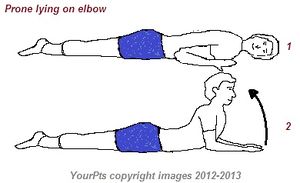Balance Training
still under construction
Top Contributors - Ahmet Begde, Lucinda hampton, Anthonia Abraham, Kim Jackson, Oyemi Sillo, Candace Goh, Aminat Abolade and Nupur Smit Shah
Introduction[edit | edit source]
Balance training is the practice of using exercises to improve stability. This includes exercises that strengthen the muscles that help keep you upright, including your legs and core[1]. It is popular in the treatment plan of geriatric patients, as it prevents falls; the second leading cause of accidental or unintentional injury deaths worldwide [2]. In some cases, balance training exercises are recommended to patients with debilitating ailments affecting , vestibular inputs, and muscle strength. An example of its application is in an below knee amputation, where the change of center of gravity and base of support affects functional equilibrium in dynamic activities[3]. Balance training is also used during recreation for individuals,especially athletes, who wish to improve posture strength,coordination and stability.
Indications[edit | edit source]
Balance training exercises is included across several treatment plans. this is because balance is a vital part of the human kinetics. The following are indications of Balance training,
- Vestibular Disorders
- Lower limb amputatee rehabilitation
- Stroke rehabilitation
- Fracture rehabilitation
- Parkinson's diseases
- Multiple sclerosis
- Neuropathies
- Postural dysfunction
- Head trauma
Assessment of Balance[edit | edit source]
Balance Training exercises are graded[1]. This implies that the intensity of the exercise is dependent on consideration of the patients abilities, disabilities and treatment goals.
The determination of the intensity of balance training exercises can be determined with an assessment of patient's balance itself. This assessment is done in consideration of the presented symptoms and diagnosis.
The assessment includes,
- An evaluation of the visual system
- An evaluation of the somatosensory system
- An evaluation of the vestibular sytem
- An assessment of musculoskeletal element
- Balance Evaluation Systems Test
- Special tests such as Rombergs test
Functional Sequence of Balance Training[edit | edit source]
In rehabilitation of debilitating cases, balance training activities start from lying to kneeling to sitting and then progresses to static and dynamic standing and walking.Progression from less to more demanding tasks is suggested.[4]
The following is a basic sequence in balance training,
| Lying to Kneeling | Kneeling to Sitting | Sit to standing | Sit to stand | Stand to Walking |
|---|---|---|---|---|
| Prone lying (neck extension) | 4 point kneeling | High sitting with food on ground | Double limb stance |
|
| Prone lying on elbows | Kneel sitting | weight shifts (without arm support and foot touching the ground | Single leg stance | Treadmill |
| Prone lying on hands | 2 point kneeling | Sit walking | Tandem position | Tandem Walking |
| Half kneeling | long sitting |
In athletics, balance training exercises to improve coordination and strength, in both the presence and absence of a diagnosis of infirmities.In programs for sport-injury prevention, rate of movement should slowly progress toward the speeds used in the sport, enabling joint stabilization during fast, sport-specific actions. For example, stabilization exercises of the shoulder joint for throwing athletes should progressively move toward more explosive movements, enabling adaptation of the neuromuscular system to appropriately stabilize the joint during pitching, throwing the ball in cocked position, and ending a throw.[4]
Related articles[edit | edit source]
Postural Assessment Scale for Stroke
Resources[edit | edit source]
References[edit | edit source]
.







